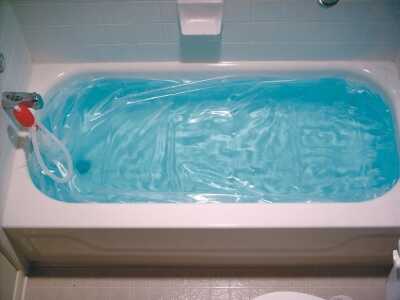 |
| The Aquapod is a Made in USA product that turns your bathtub into a water tank holding 65 gallons. Blue dye has been added to this water to demonstrate the system. We tested it and it works great. |
Water is the most crucial and diverse aspect of preparing for the breakdown of our society. Where do you get your water now? Is it from the city? Is it from an artesian well? A shallow well? Do you have lakes or streams near your house? Are those your sense of water security? Is your swimming pool an ever-available water backup? All of these pieces mesh into a fairly large body of possibilities, and points of failure. Those points of failure are what we most need to talk about. Once you understand the issues, and the types of methods to resolve them, water gets much simpler. The bad news is that if you live in a tightly packed area, or an apartment, you may have to make a decision now that eventually abandoning your home is mandatory (but not right away). Depending on where you live, your water issues may be complete scarcity, pollution, feast or famine seasonal rain and droughts, deep freezes and even deadly bacteria and viruses in the water. There are ways you can prepare for all of these potential problems, for both the short and long term. FEMA isn’t going to bail you out of this one. In fact, if you watched Jesse Ventura’s FEMA camp video, there is a pretty good chance that they will be the ones you are hiding from.
Those of us who don’t live in flyover country are mostly dependent on city water. It is generally reliable, even in the midst of disasters. Even in the worst hurricanes in South Florida, we never lost the water but were only put on boil notices. That is a pretty good sense of security, but the only reason it didn’t go out was because the government has those giant pumps on emergency backup power comprised of enormous diesel generators. In a true national or global disaster, those generators are eventually going to run out of fuel. The good news is that it thankfully won’t be the first thing to go, so if you are prepared, there is a decent chance that you could potentially store several months of water for the initial crisis period. This would allow you to not have to attempt to get out of your area and fight the death-trap gridlocked highways that will claim many lives at the onset of any major disaster.
Bathtub Survival
Outside of storing giant pickle barrels in your garage (and we’ll get to that), your best asset for storing water is your bathtub. Well duh, right? Wrong. Your bathroom is also the most dangerous place to store your water, especially if you have kids. Fecal Coliform bacteria is a deadly killer in a survival situation, and it doesn’t take much to pollute a water supply. When you hear about people dying of dysentery, typhoid and gastroenteritis, there is a pretty good chance they got it because of Fecal Coliform (though if you read that Wikipedia page on it there are some conflicting theories). Farmers aren’t even allowed to plant vegetables for a couple months after fertilizing a field with cow manure. Human feces have up to 1,000 times as much of Fecal Coliform than do cows.
Your bathtub holds about 65 gallons of water, and there are three giant plastic bag products on the market that will help you keep that water fresh. Right now Amazon has a three-pack of Made in USA Aquapods on Prime for $26.03, shipped. If you have two bathtubs, I strongly suggest you just go buy the three pack now. Even if you plan to utilize some of the more advanced systems I’ll suggest below, an extra 65 gallons of fresh water never hurt anyone. The other two brands of bathtub bags are “The Reservoir” that you can usually find on Ebay and WaterBOB, also generally on Amazon for about $20 per bag. Both of them claim to store 100 gallons instead of 65, and both are the same packaging with different names on the side, and made in China. The three-pack of Aquapods is a no brainer. More information can be found at https://aquapodkit.com/.
To take the Aquapod one step further, there is nothing that says you need a bathtub to use it. I wouldn’t expect to just fill it with water and expect it to survive for months as a stretched bag, but constructing a simple cage for it out of 2x4s and lining the inside with 1/4″ plywood should work just fine. In fact, you could probably stack two of them safely, which, if you are careful, could be used for quite some time. Officially each container is enough water for a family of four for 14 days, but if you don’t use it to flush the toilet or wash dishes, it can last much longer. We will also take a look at the Aquapod as a survival still later.
 |
| Even Costco has gotten on the wagon with survival supplies. They sell this ridiculous 55-gallon water storage kit, “discretely packaged,” for $119. If you can only use blue barrels, find them on eBay or Craigslist for as little as $15 each. |
Bulk Storage – The Cistern Approach
If you take a tour of Key West, you will learn that the entire Florida Keys is mostly devoid of fresh water, and that the islands all lived almost entirely off of rain water collected in cisterns until a water pipeline from the mainland was laid in the 1940s. That is on only 36″ per year average rainfall in very seasonal rain. You can live on rainwater in most parts of the United States, and since it is water that is the absolutely most important aspect of your survival, saving some water in advance and planning to store rainwater long term is a good idea. Assuming we didn’t just get nuked, rainwater is almost always 100% safe, and with minor treatment will last for a long time. If we did just get nuked, that would be a pretty good argument to have several hundred gallons on hand. The more the better.
To store water, you are going to want containers made of Polyethylene (HDPE) plastic, PETE (#1), LDPE(#4) or Polypropylene (PP/#5). Right now there is a huge supply of 55-gallon blue water barrels on Ebay for $100 to $150 each, but these are being sold by “prepper” opportunists. As you can see from the price of the Aquapod, which holds more water, this is a ridiculously high price. You can get five-gallon buckets for under $10 each. Don’t fall for this scam. Instead search for just “blue water storage barrel” on Ebay and it will bring up a lot of people selling them for $15 each, without pumps. The pumps you can get on Amazon or Harbor Freight for like $4-$15. If you live near enough to one of the sellers with local pickup available for the barrels, $15 each is a good buy. Many will also ship them to you for actual cost, even if they say they won’t.
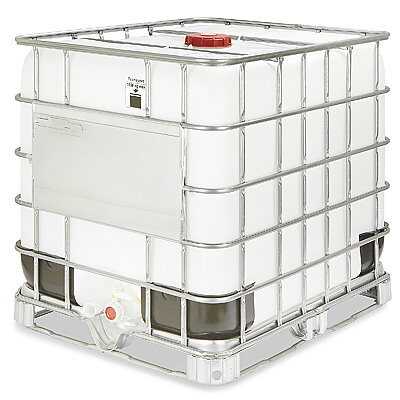 |
| The IBC Tote is a 275- or 330-gallon plastic tank trapped in a plastic or metal cage. They sell for prices ranging from free on Craigslist to $250 or more on eBay, for used totes. If you live in south or central Florida, there is a great company out of Sarasota that delivered me several of these totes. Sarasota Container Company. The totes come from France and carry flavorings, and they do have some black ones. |
If you have the room, a better and inexpensive option is what is called an IBC Liquid Tote. The totes are used in dozens of different industries to transport liquid ingredients and chemicals. An IBC Tote is a giant plastic container that has usually been been bound inside of a plastic or metal cage, meant to be transported by a fork lift. Used IBC totes come in 275- and 330-gallon sizes, and you’ll find them on Ebay for $75-$200. Not all IBC totes are capable of holding potable water, so make sure you find out what was in them before you buy. You don’t want to poison yourself because the previous use of the containers was for noxious chemicals. If you find a cheap source that is within driving distance, and the container has food additives or oil in it still, unwashed, you can clean these through the top opening with a pressure washer. The containers have drain spouts at the bottom with a 2″ coupling pipe and a ball valve with a handle. At the higher end of the price spectrum on Ebay will be the people who have already cleaned the containers and who offer to set up shipping for you. These will be shipped to you via truck freight, so you will have to provide your zip code in order to learn the total cost. Check Craigslist for local sellers as well. Just search on IBC tote.
There are two nice things about the totes over 55-gallon barrels. One is that they have the outflow valve at the bottom. If you store the container outside, all you have to do is dig a hole next to it for a five-gallon bucket and you never have to pump anything. You can also get couplers at Home Depot that will turn the spout into a garden hose. The sheer capacity is another reason. If you plan to build a true cistern approach to your water, a bunch of buckets will require a complex feeding system, whereas a couple of IBC totes require one valve. Also, keep in mind that you should replace your water at least a couple of times a year, even if you are treating it. With the blue barrels, you will have to pump the water out when you want to empty them. What a pain. With the IBC totes, emptying them is a matter of turning a handle.
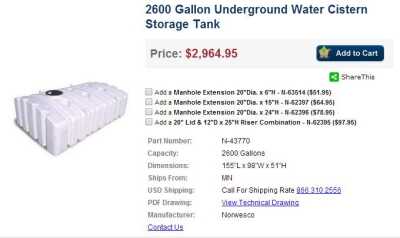 |
| This 2600-gallon buryable cistern sold by Plastic Martis a good option if you have extremely seasonal water. |
Depending on where you live, seasonal rainfall may be your lifeline for the entire year, and in these areas I strongly suggest a genuine cistern. There are several companies that advertise in the prepper/survival market, but that I found one seems to serve all of the liquid storage and transportation markets, and not just the opportunistic prepper market, is Plastic-Mart.com. They seem to have everything from smaller-than-IBC totes to about that 265 or more capacity, to tens of thousands of gallons. I can’t recommend them because I haven’t ordered from them, but they seem like a great resource if bulk water storage is a matter of absolute survival in your area, and you have the cash to invest. One noteable product is the “doorway” tank. If you are in an apartment, these can come through the front door, weigh under 150lbs., and store up to 400 gallons in one closet. Nice stuff!
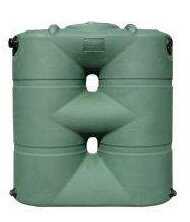 |
| They also sell several different models of large tanks that fit through a 30″ door. |
The Pitfalls of Swimming Pools
Then there is the good old swimming pool. If you have a pool and all of your neighbors have pools, there is a pretty good chance that you will be able to rely on your pool for drinking, bathing and toilet flushing water for some time (assuming your city sewerage doesn’t back up which it will). Just beware that your pool filter is going to stop pumping, and chlorinating that much water to protect against algae and bacteria requires a lot of chlorine. Plan to filter your pool water meant for drinking within a couple weeks of the city water shutting off.
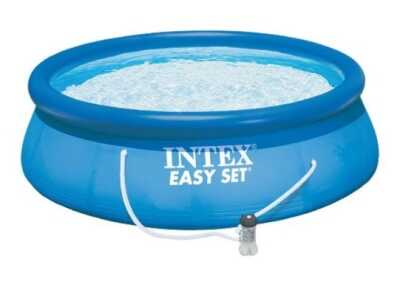 |
| The 15′ round Intex pool is the best way to store water on the cheap. |
If your neighbors don’t have pools, beware that in couple days after the water goes off, everyone will be waiting for the FEMA truck that isn’t coming and thinking about your pool. Then it becomes a liability and likely a magnet for trouble. Nobody wants to die in a gunfight over a swimming pool, so plan to siphon off as much water for indoor storage as possible to get through the first few weeks when local resources are completely depleted and most people have left for greener pastures.
The absolute cheapest option for storing a whole bunch of water is a 15′ round Intex backyard pool. The whole kit with filter is available on Amazon for $215 with free shipping for Prime. With dimensions of 144″ x 144″ x 41″, it will hold somewhere just south of 3700 gallons, calculated as .00433 x cubic inches as if it were a square and not a circle. Buy the cover, because blocking the sun will slow algae and bacteria growth once your filter system goes down, and you won’t collect leaves and other stuff as your stored water sits there, hoping it is never needed. This model of pool has a floating ring that raises the walls if you fill it, so it won’t be ideal as a rainwater cistern. Other models have poles that hold up the walls, but the bigger models don’t have covers available that I have found.
Storing Water Tips
Storing water is not as simple as you might think. For things like flushing your toilet, bathing and washing dishes, you can get away with water that has sat in plastic for years, but to drink you will have to drain and replace it at least twice per year. City water has chlorine already in it, as do some shallow well systems that remove sulfur and other minerals. Artesian well water and rain water will grow bacteria and algae on their own pretty quickly if you don’t add some bleach or powdered pool shock. For bleach, add 1/8 teaspoon (or eight drops; about 0.625 milliliters) of unscented liquid household chlorine (5-6%) bleach for each gallon of clear water. For pool shock, look for 68%-78% calcium hypochlorite without any water softeners added. Make a solution of one teaspoon of sodium hypochlorite to two gallons of water, then use that solution 1:100, solution:water. So for one 165 gallon IBC tote, you would use 1.65 gallons of solution. Personally I would just put two teaspoons of powder in and call it a day, but that’s me.
Chlorine kills most pathogens with the noticeable exception of Giardia, otherwise known as “beaver fever.” It is called beaver fever because Giardia is really common with hikers who drink river water that looks crystal clear, but in which a beaver defecated in upstream. If you are collecting rainwater or filling your barrels or totes with well water, there is no danger of this disease (rainwater is actually distilled water). But if you are purifying water from a local pond or stream, you will want to use a filter to make sure that there is no Giardia in it. We’ll get to filters later in this article.
 |
| Iodine is a superior chemical for sterilizing water, but it tastes funny. |
Iodine is a superior chemical to chlorine for water purification and kills pretty much everything. That is why those little water purification tablets at the camping store are made out out iodine. Note, however, that people who are allergic to shellfish are also allergic to iodine (eh, one less mouth to feed). Why don’t people recommend iodine first when it comes to water treatment? The taste. If you are filtering also, the taste will come out usually. But otherwise you are stuck with it. There are also dubious health issues with long term ingestion of iodine, despite the fact that they add it to salt. Chlorine can be breathed out just by letting water sit. Iodine you have to filter. If you want to have some iodine on hand, “just in case,” 2% iodine tincture on Amazon is about $6 for two ounces. The formula I found is five drops per quart when the water is clear, and 10 drops per quart when the water is cloudy. Do your own research regarding adding it to all of your water and health detriments, if you can take the taste. An interesting factoid about iodine is that chlorine degrades when you store it, as much as 20% per year. From what I have been able to research, iodine does not.
Make sure to either paint your water containers so that they are opaque, or cover them from the sun. Despite the fact that UV from the sun kills bacteria under certain conditions (see below), sunlight can also really give you a problem with growing bacteria long term, as well as algae.
It would really be nice if one topic regarding water was simple, but alas, filtration is a mess of little details. Worse, the information is conflicting and sometimes makes no sense if you don’t know the actual science behind it. No one method of filtration guarantees that you will have water free of harmful properties. Filters also wear out, so no matter what you filter your water with, at some point you will need an alternate plan.
 |
| The LifeStraw is the most robust of the personal filter products we have seen. It filters everything but viruses and only costs $20 for 250 gallons of filtering. |
For pure survival, I went out and bought a half a dozen LifeStraws. The new version filters out almost everything, including Cryptosporidium and Giardia, but it is only good for 1,000 litres, or just over 250 gallons. The unit is an actual straw, so cooking water would have to be dealt with separately. At $20 bucks a pop, it isn’t a huge investment to get one LifeStraw for each person of your family, but after the time is up for the filter, you are pretty much on your own. Of course, we all will be at that point. You can’t prepare for everything. But I would see the LifeStraw as more of a backup measure of last resort than the primary plan to be able to drink fresh water. They now make a family unit that I have not tried.
Filtration & Purification
The most confusing thing about filtration is the issue of “microns.” Activated charcoal filters are supposed to only filter down to .5 microns, which would exclude Giardia and some other harmful bacteria. But if you look at the Frequently Asked Questions page for Brita faucet filters, they claim to filter Giardia, Filter technology has stretched itself beyond the limitations of just one media type because of educated consumers, and you really need to read the labels yourself and figure out what level of filtration you are most comfortable with.
Ceramic filters claim to filter down to .2 microns, which should catch most things except viruses. So if you are drawing water from a pond or stream, where human contact is inevitable, keeping some iodine on hand wouldn’t hurt. Historically, lots of really bad diseases tend to spread in third-world environments and America would be no different after a short time. Water is a comparatively friendly carrier for viruses, friendlier than air. Nonetheless, I would assume that you need some sort of ceramic filtration for ongoing bulk water supplies. Fortunately they are cheap and trouble free.
I am slightly embarrassed to admit that I personally got hoodwinked on my first ceramic filter purchase. I get a lot of interesting information and perspective from the Alex Jones websites, so I like to support the cause by buying stuff in the store. For water filtration, I figured I’d try ProPur, which is one of Alex’s long-time advertisers, and now they actually sell the products themselves at the InfoWars store. At first glance, the filter systems seem very complicated, full of choices as to how many people you need to supply, but that is just meant to get you to buy the most expensive system, which I did.
What I’ve learned since that purchase is that all ceramic systems are the same design. You put a fill bucket on top, with the filters attached to the bottom of it, and a catch bucket on the bottom. Dirty water goes in the top. It travels through the filters and drips into the bottom bucket, which has a spigot of some sort. The filters, not the buckets, are the main thing, and how many people you supply should be gauged on the throughput of the filter type that you choose. The buckets can be metal or plastic, and a hand drill with a 1/2″ bit makes the hole for the filters and spigot to attach, with included rubber washers. I paid almost $300 on the Alex Jones website for two stainless steel pots, a metal spigot, and 4 filters. I didn’t even get the most robust filter. Since I ordered that system, ProPur has come out with a new filter that also takes out flouride. Oh well. This isn’t for city water anyway.
 |
| It is a good idea to get some kind of ceramic filter and gravity-driven bucket system. The black Pro-Pur filters take out most harmful stuff and cost $45 each. |
The ProPur filters I received are the black ones that look like a dome. The new ones are more enlongated so as to contain a second media for fluoride. Nothing is wrong with the black filters themselves. At $95 for 2, the black filters are also very competitively priced. ProPur claims that they filter out 99.9% of nearly everything, including Cryptosporidium, Giardia, E. Coli, Fecal Coliform, heavy metals, pesticides and even chlorine. My mistake was not in buying the filters. It was paying almost $200 for two stainless steel pots and a spigot. Alex Jones has helped to open the eyes of millions of Americans as to what is really going on out there, but I wouldn’t trust him with my back in a gunfight. With all of the writers and staff he now has on hand, you won’t find an article on water as comprehensive as the one you are reading now.
 |
| A better option is the Just Water filter kit, with cover socks and a spigot. |
The most integritable company that I can find making ceramic filters is called Just Water, or justwater.me. These filters also have activated charcoal inside them (that doesn’t leak out like ProPur), and they filter 100% of the same stuff claimed by ProPur. What I find most interesting about the Just Water Filters is that they are not included on the comparison chart of https://propurusa.com/Page_14.html, the ProPur website. They mention similar ($200 stainless steel pots) brands, but Just Water is left out. That could be because the Just Water filters are cheaper and have a longer life. Plus, they come with a sock that pre-filters the water to extend the life of the filter. The official life on the data sheet is one year, but if you clean and reverse flush them, Just Water filters will last almost indefinitely if you look at the independent testimonials by Googling around on them.
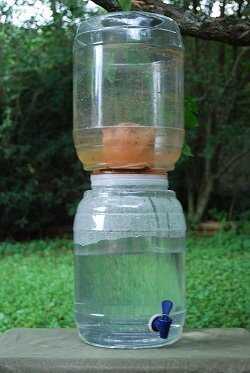 |
| The bottom bucket will gradually fill with clean water. Each filter gives you over four gallons a day if you keep the top container topped off. |
Available for $80 on Amazon for two filters with two socks and a pour spout, I don’t think you can beat the Just Water filters. The best detail about the company is that they don’t try to hide their products in packages with overpriced stainless steel buckets. The data sheets for the filters are on the website, as are independent third party tests of the filters, and they suggest you just use regular old five gallon buckets. These can be found at Home Depot, or 3 for $30 on Amazon. You could also use two 55 gallon drums, or pretty much anything else capable of holding water that you can drill a 1/2″ hole in for the top bucket. The bottom bucket needs either 1/2″ hole for the spigot, or some other way to get the water out.
Sunlight Ultraviolet Treatment
You may have seen documentaries from Indonesia and other third world environments where plastic PET water were used to treat infected water with ultraviolet light from the sun. This can kill a lot of stuff, but it is a very specific margin of error. You can’t use glass bottles, because glass doesn’t allow the UV to get through. You can’t used colored plastic or polycarbonate. The Wikipedia article on this is a must read, because it includes information about a Swiss study on what chemicals from the PET bottles actually leach into the water, bringing the quality below international drinking water standards.
Reverse Osmosis
If you have educated yourself on the hazards of fluoride in drinking water, there is a good chance that you have already invested in an undersink Reverse Osmosis filter for your kitchen. The military also uses this method to remove salt from seawater. It all sounds great, and RO sounds like a cutting edge water purification technology, but it isn’t.
For survival, RO is almost useless. The concept of how it works is simple. We have all put a plastic bag of ice in the cooler to keep food cold and come back hours later to find the bottom of the cooler full of water, yet the opening to the bag had always remained up. Sandwiches in plastic Zip-Loc bags also apparently leaked some water inside the plastic, despite the fact that the zipper was fully closed. This is because thin plastic is not water tight. There are pores in it that water (and air), can get through. Reverse Osmosis uses this property of plastic to filter water. The water is put under pressure against the plastic, and gradually seeps through, sans all of the contaminants. What they don’t tell you about RO is that it requires a constant pressure from a pump to work, and the water that doesn’t go through the plastic while the pump is on is jettisoned by the system as waste.
If you installed your own RO system, you probably remember that there was a drain. That drain eats up to 90% of the water put through the system, while as little as 10% ends up on the “clean” side of the plastic, ready to drink. That is why all RO systems have a significant reserve tank, because the actual flow through the filtering system is way too slow to be of use. With unlimited water and unlimited energy (the myth we live in today), RO is a truly awesome technology, but without either or both of those, not so much.
Stills – Solar and Moonshine Cookers
On a sunny day, all open water sources will have some evaporation going on. That is how the clouds build up their water supply, and when it rains, as mentioned above, the water is essentially the same quality as distilled water that you will find at the supermarket, with very few contaminants. You can use that same “technology” to create your own water supply by harnessing natural evaporation. Any water source that you can cover with plastic sheeting is a potential source of fresh water.
 |
| The solar still is an interesting method for collecting water using the sun. We are going to try this ourselves to see how much you actually get. |
At its simplest, a solar still is easy to make. Dig a hole in the ground and put bowls of murky, salt or polluted water at the bottom, with a collection bucket in the middle. Cover the hole with plastic sheeting, weigh down the edges with rocks and put a rock right in the middle over the collection bucket. In the heat of the sun, water will collect on the bottom of the plastic sheet and drip off in the middle. How much water you collect will depend on how much sun you get, your latitude and how many holes you set up. I would buy the 4 mil. stuff at Walmart. It is cheap and doesn’t take up a lot of space.
The other kind of solar still requires a condenser of some kind, and it is a lot like a regular cooker still that produces steam and that is used for making moonshine. The physics of solar distillation used in this manner is simple. Water is heated and begins to interact with the air. This causes evaporation at far below the boiling point of water, so that the water is lighter than air and floats. To extract this water from the air, all you really need is a cooler temperature. A regular cooker-type still uses a coil of metal tubing, through which the steam from the cooker travels, cools down and turns into water that drips out of the tube. The coil is called the condenser. Solar stills can be constructed the same way. The simplest still constructed in this manner can be two plastic bottles with a plastic tube between them. Fill the first bottle half way with water and put it in the sun. Put the other bottle in the shade, lower than the first, and ideally put some kind of insulator around the tube to protect it from the heat of the day. Eventually, water will fill the second bottle. We hope to try a version of this using a bag from the bathtub storage system and a plastic tube condenser coil. Stay tuned on that one. Solar stills don’t produce a ton of water but it’s enough to keep you alive.
 |
| If you live in a climate where water freezes, invest in a hand ice auger. It drills a hole through up to three feet of ice. Gas models are available as well. |
Winter Water
A deep, hard freeze erases a lot of stored water and may even destroy your containers. If you live where all the water freezes and stays frozen several months per year, a way to deal with that has to be planned, purchased and even tested now. There are two ways to deal with frozen water, besides using valuable fuel to melt it or to keep it from freezing. One is to dig it out of a lake. The other is to build a greenhouse. Neither are perfect.
Digging water out of a frozen lake is something you probably have seen over the years if you live in the North. Ice fishermen use something called an ice auger to dig holes in the ice. On Amazon you’ll find hand ice augers for under $100, including one that attaches to a cordless drill. They will get you through about three feet of ice, which should be fine in most places. Gas-powered augers sell for $300 and up these days, and have two-stroke engines, so you have to add oil to the gas. If you are going to swap fuel for water, you’ll get a lot more water from the five minutes of fuel in a power auger than you will a heater to melt snow. Once you dig through all of the ice, it is just a matter of cracking off new ice from the hole every day to get a new supply of water. That water should still be treated or filtered. Cold water can harbor some dangerous stuff.
Keeping water from freezing without burning some type of fuel is going to require a greenhouse, or preferably a double greenhouse. Even in the dreariest stretches of grey skies during winter in the north, you would be surprise by how much heat a greenhouse catches, and on sunny days it will be sweltering inside the greenhouse, even though it may be single digits on the outside. Greenhouse technology has grown far from what you would think and isn’t that expensive. I have always used FarmTek for my materials, and I strongly suggest that you build only hoop models if you want them to survive winter. A 12×15′ hoop house is about $1,200 if you buy them as kits. Not as kits, you don’t have to spend as much money, and there is no need for multi-thousand double-wall polycarbonate panels kits. I once had a greenhouse that withstood several winters in Amherst, Massachusetts, made from a hoop carport bought at Costco for $249 and plastic sheeting with end connectors from FarmTek. The grass grew green all year round in that greenhouse, even though it was sometimes 10 below outside. A hoop greenhouse doesn’t give the wind a long flat side to blow against, and because heat rises and it is a half circle, even a heavy snow starts melting off within an hour.
You can also build straight-side pitch roof greenhouses with Kwik Clamps and galvanized pipe from Home Depot. The secret to building greenhouses is how you keep the plastic together. You trap the pieces you want to join inside of a channel using a spring. Greenhouse plastic will generally last you four years before it starts to break down and rip. That should be enough time to come up with a plan to get the heck out of the cold.
Building, or at least having the materials on hand for, a smaller greenhouse inside the larger greenhouse is more of an insurance policy. Double-wall plastic on your greenhouse will give you something of an insulating air buffer, but in real greenhouses you hook up a blower to keep air between the layers. A smaller greenhouse, or “cold frame” inside the larger greenhouse is just more insurance, in case it is really dark and dreary for a long stretch or if your main greenhouse fails. Look in the cold frame section at FarmTek, and you’ll find a bunch of short options that could be set up over a water tank.
That melted water also acts as a heater at night, so you may want to keep your base of operations inside the actual greenhouse and sleep there. We are going to get into heat and surviving a cold winter. A greenhouse is going to be your lowest-maintenance option.
Priority #1
Officially we all use over 20,000 gallons of water per year each, but that includes water for irrigating lawns, taking long showers, running dishwashers and all kinds of other stuff that we won’t have any use for in a post disaster world. But anything that you can do to gaurantee at least five gallons per day of fresh water per person, the better off you are going to be. You can skimp on a lot of things, but don’t skimp on water. It is a pain to deal with big tanks and gutter systems for collecting rainwater, but if you don’t have any water available without any people between you and the water, do what you have to do to make sure you don’t have to leave your perimeter for the most vital of all survival supplies. Don’t leave home is going to be our theme throughout this series, and water is always going to be the thing you have to leave home for the most.

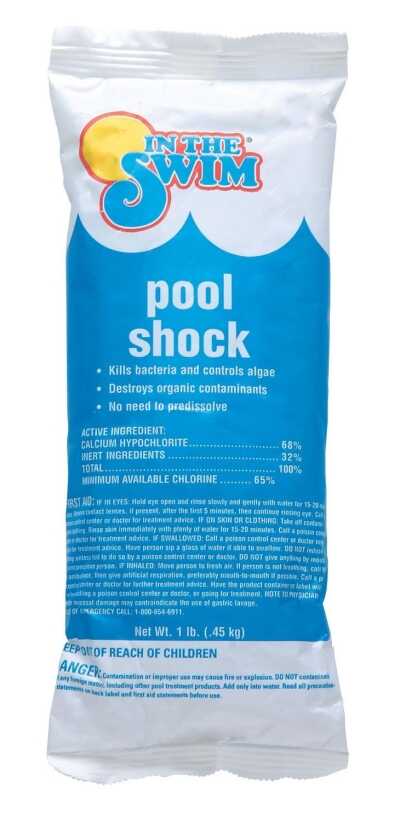

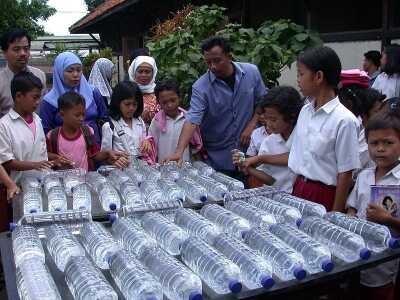

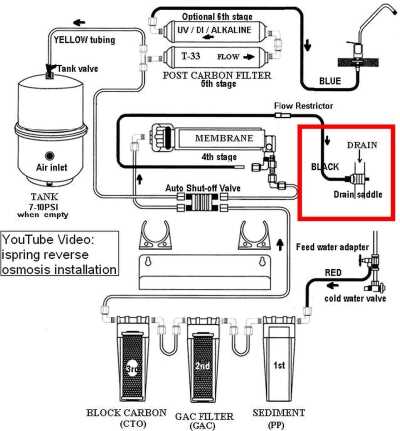
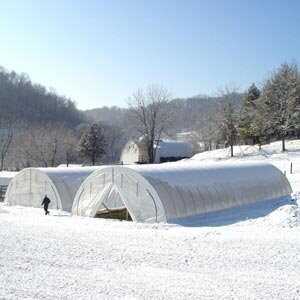
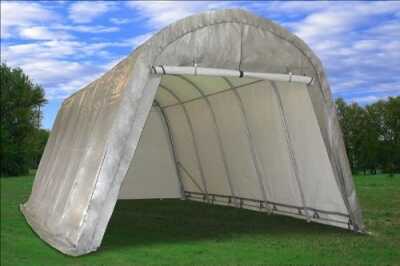
Your forgetting the BERKEY ceramic water purifiers. You can just buy the filters and make your own tank as per your website instructions.
When things get really bad in America, how would a person store water in IBC totes long term? You state that the water needs to be changed twice per year but in the event of an EMP or war or whatever, the water departments would shut down. Continue to chlorinate and boil?
Until then, I don’t have a problem stacking and filling them, and then gravity irrigating from them followed by refilling.
interesting articles and this is my first first reading a very interesting article thanks for this article that fits with the theme news.
poker online
If you decide to use an IBC Tote you must cover it from the sun light and make sure it’s 100% over wise algae and fungus will grow within the IBC Tote.
Great video on YouTube using 6mil black plastic to protect the IBC
Very nice article! I would suggest purchasing IBC Totes and barrels new instead of used because if the seller is unable provide sds sheets/forms you really have no idea what was really in them. It’s not worth the risk to purchase “food grade totes” off of craigslist unless they can provide the SDS’s. I would also check out some local breweries and wineries too.
I do trust all of the concepts you’ve offered in your post. They are really convincing and can definitely work. Still, the posts are very short for starters. May you please extend them a little from next time? Thank you for the post.
As an avid backpacker since 1971, and a graduate of the Warner Springs SERE School (1969) and a former outdoor columnist for The Denver Post, I can say that you missed 3 of THE most important (and best) items. Note; I am in no way related to Rescue Essentials nor do I get free or reduced items from them.
1) $200 4 Liter Sawyer .01 micron filter system. There is a $50 cheaper one, but it’s a .2 micron filter. This unit backwashes, so you can get 1M gallons from it, if you’re careful in the backwash procedure. Tests, so far, say this is accurate.
http://www.rescue-essentials.com/sawyer-complete-water-purifier-system/
These tablets FAR exceed iodine – and I talked with Aquamira last week, and they assured me that the new packaging shows an expiration date (shelf-life of 4 years)
http://www.rescue-essentials.com/aquamira-water-purification-tablets-20-ct/
REVIEW – http://sectionhiker.com/aqua-mira-water-purification-drops/
When packing with a lighweight water purifier, like a http://www.amazon.com/Katadyn-Vario-Multi-Water-Microfilter/dp/B000KUVVY4, I also – always – finish up with the UV unit, as well as take these last 2 to Mexico when I go SCUBA diving. I have never had an intestinal illness.
http://www.amazon.com/SteriPEN-Adventurer-Personal-Handheld-Purifier/dp/B00M3SOJIG
And NOW that concealed carry is legal in National Forests and Parks (thanks to OBAMA, not BUSH), I always have my Kahr P9 with me, as well. Of course, Obama gets NO credit for this. http://www.topix.com/forum/city/el-paso-tx/T3IGFCBBG6BK92M6C
Answer me this: if Obama is going to take our guns, why would he sign this legislation?
Very informative article here, such a good read about water and survival. But I don’t think that rainwater is safe now, especially on places where big factories and industries emit harmful particles to the atmosphere. Good thing you covered filtration and purification. This is well packed. Keep it up!
What about the old fashioned Hand Pump for those who are not on city water and have their own well. It may be problematic in the winter if not protected from freezing, but could supply unlimited clean water. Don’t know what the cost of setting something like that up if it were possible in your area.
Great article on water ! It’s one of my passions. Most of the year ( not in Winter ) the bulk of our reserve water is stored in a green 650 gallon cistern from Plastic Mart. It’s heavy duty , has a large opening on top with a screw down lid and at the bottom is a place for a valve. For a few bucks I went to the hardware store and bought a brass spigot to connect my garden hose to. The plastic is translucent enough to see the water level. I put mine on a slight rise up against my house so gravity will drain it and the house conceals it. Great product, great design. I also have a 300 gallon Rubbermaid stock tank, made for live stock. It’s the size of a hot tub, is very heavy duty and has a sturdy drain at the bottom. The kids use it as a pool. It’s easy to clean and when put on a platform a few inches high , uses gravity to drain the water away from the base. But, in winter I have to drain both of them. Indoors I have many cases of bottled water plus canteens, Nalgene bottles and a bunch of other small containers. I also have about 20 Water Bricks which I like very much. 3 1/2 gallons each ( they come smaller too) heavy duty bail handle , sturdy construction. They are designed to be stackable. I made a coffee table out of some and threw a nice looking cover over it. Never would know it was there. I stash some under beds, behind a couch, wherever you have room. Light weight even when full and easy to transport. I even keep 2 in the car trunk in warm weather. All year long all the water we consume ( drinking water, coffee, ice etc.) goes through our Berkey filter. It never fails and is very cost effective. Great combination . As a back up I keep a pound or so of the Calcium Hypochlorite ( pool shock) . Be sure to get it with no additives and read directions very carefully, using gloves, mask and goggles. It doesn’t expire like bleach and can’t spill.
I am new to your site but it seems great. A lot of no BS info all well thought out. Good job folks.
You do not talk about well water and storage in an above ground S/S tank?
A note on the nuke issue. Saychelle now has filters that remove all the normal nasties plus radioactive impurities. Actually tested in Japan after the meltdowns. Made in USA and reasonably priced. My 20 oz sport bottle with filter was around $30.00. Good article.
The Sawyer mini filter will treat 100,000 liters of water and is comparable in price to the life straw.
Love your closing sentence…”Don’t leave home is going to be our theme throughout this series, and water is always going to be the thing you have to leave home for the most. ”
Thanks for the info on the filters. I was going to buy that same shiney stainless steel tank from the same infowars vendor, but now I am going to buy filters and build my own.
There should be a caveat added to the low-temp distillation process; it is the high temperatures that kill pathogens, and the soda-bottle, plastic sheet, etc., type still will only reduce some undesireable parts of the potential threat. Its however a good way to take the water out of mud.
During WWII the Navy, around the Phillipines, found the high temp (elevated-pressure steam) still they were using to distill seawater didn’t kill all the local pathogens and they needed to pretreat with iodine. A good test kit should be included in any system set up to supply water from questionable sources. This also could be added to your next edition of this article.
If you want a faucet at the bottom of the blue plastic barrels you just need to install a plastic bulkhead fitting threw the side of the barrel a few inches up from the bottom.
If you get a LifeStraw that works, they get good reviews. If you happen to get one that doesn’t work, they are useless. For my money, at about the same cost, I like the Sawyer mini water filter, plus it’s US made(I think). They are easy to maintain and you don’t have to be able to suck start a Harley to get water thru it.
I guess I must be lazy when it comes to emptying a blue upright poly 55 gallon drum. I hook up a length of hose to the bottom of the barrel and suck to get the flow started and siphon the contents out on the ground.
You can always just push the barrel over (after removing any pump you may have installed on the top) and let it drain itself. If you locate the barrel under a tree, dumping the barrel is a good way to keep the tree healthy in dry seasons. When SHTF, you don’t want your trees getting dry & unhealthy, maybe coming down on your house. Your homeowner’s insurance isn’t going to be much help then. I’m giving serious thought to taking down a huge old maple tree in the yard that, if it dropped serious limbs in a bad storm I’d be hard pressed to fix the roof damage myself, at my age.
how about sanitising th water with colloidial silver…..
Silver is what they impregnate the filters with to stop algae.
Just another idea on extending the life of filters of murky water: carry some paper coffee filters to strain the water first to avoid plugging the final filter too fast. This works well, doesn’t take up much space, and are pretty cheap as compared to a quality final filter.
canon777
Absolutely right. Most of my water will come out of my farm pond, which can get murky around the edge where it’s easiest to draw water. I picked up a couple of HUGE stacks of generic-brand coffee filters (couple of thousand, I think) for very little money at a box store. I’ll probably pick up 40-50 gallons at a time with the front bucket on the tractor (while my diesel supply holds out), drive it back to the house & filter it as needed between a couple of 5-gal buckets with a coffee filter in between. After that I’ll use a good filter and calcium hypochlorite (pool shock). For actual drinking I’ll try to boil it, too, just to be sure. Not too hard to boil a quart or two over a small hobo stove on the porch, saving the Coleman stove fuel (white gas) for bad weather. Fortunately we can easily rake up twigs & small debris under the woodpiles to run the little homemade hobo stoves almost year round.
Most excellent article! I also appreciate your use of the actual names of products and suppliers that have used, and the ones that you know of, but have not used. It just shows me that you are being as honest as you can be. I appreciate that.
More on the Lifestraw, that is a simple lifesaver with no shelf life. I keep one in my truck, one in my Bug bag, one at the office, and one in my CERT bag. The research that I did on this product said that they were made in Switzerland, but mine were made in Korea? I hope that I didn’t get a counterfit? Any comments?
Again, great article. Thanks agin.
canon777
Great info. So mush that I am going to print and keep with my prep stuff
Tucker….3 pack here; reads for 195 gallons: http://www.amazon.com/Emergency-Drinking-Water-Storage-AquadpodKit/dp/B004R7KDYU/ref=sr_1_5?s=hi&ie=UTF8&qid=1394467090&sr=1-5&keywords=Drinking+Water+Storage
Great article! Keep them coming. Thanks.
Excellent article, the most comprehensive treatise on the subject I have seen. Bookmarked and looking forward to future installments. thanks!
I checked Amazon about the waterpod. I only saw 1 for $26.03. Did not see the 3-pack?????
have to agree the 3 pack of bags and 1 pump set was almost $60. I thought the link was bad.
Another tip on Amazons practices – if you want that good price do not wish list it – buy it now. They are sneaky and use price fluctuations as a market tool to get you to buy. I have had some stuff in the wish list long enough it drops in price (after a long enough time) to get you to buy. If you don’t buy after going over your list, as I do on occasion. the price will once again go up…
Missed out on the excellent price more than once that way. :p
Great info and totally without bias. Thank you.
Best article on water storage/filtration I have ever read.
I believe you are misreading the Wikipedia article’s comments on leaching from PET containers. By “below WHO standards” they mean that concentrations found were well below what WHO considers risky. Note that they also mention that the levels found were similar to those found in HIGH-QUALITY, treated tap water.
Same for the reference to antimony levels.
No risk from that source. You might consider editing that portion of an otherwise excellent article.
Excellent article, but several minor cautions & comments —
Rainwater is only theoretically pure. If you’re taking runoff from your roof, you’ll be taking in plenty of nasty bugs from bird & squirrel crap, plus probably mice & snake crap (all of which I’ve seen on my roof), plus whatever filth like dead birds or insects in your gutters. Keep in mind the ghastly stuff you”ve cleaned out of your gutters! Using open cisterns or containers to catch rainwater doesn’t stop birds (or squirrels in trees above) from crapping in them, and plenty of animals will drink out of them when you’re not around, adding more bugs you should worry about. Just treat rainwater as you would any tainted water source, with chemicals AND filters. Lengthy boiling is also a good idea, tho it’s only good for microorganisms, ineffective against toxins or pollutants. A bit of extra effort to keep from dying of dysentery seems like cheap insurance to me.
Use the pool shock (calcium hypochlorite) rather than bleach. Its shelf life is indefinite (probably forever if stored clean & dry in buckets), whereas bleach breaks down quickly. Check any bleach jug you’ve had hanging around for a year or so & you can see & smell the deterioration (We run a dog rescue kennel & use tons of the stuff).
I will check the research you cite, but every legitimate reference I’ve seen considers “leaching of toxins from PET plastics” as little more than an internet rumor with no peer-reviewed research to back it up.
Excellent point about buying the filters & rigging up the equipment yourself. Anyone who can’t manage that simple task probably doesn’t have enough survival skills to last long anyhow.
One thing I’ve never seen is any commentary on how safe it is to use 5-gal plastic drywall or paint buckets, which are readily available from construction sites. The lids are not always in perfect, re-sealable shape, but should be OK if carefully duct-taped. Using the food-grade Mylar bags should alleviate any safety concerns, but I suspect a good scrub and soak in bleach solution should make them safe for storing rice, etc. In most areas it is hard to scrounge food-grade pastry buckets.
Excellent work. Keep ’em coming !!!
Good info; saved. I had been trying and still am trying, to find out how my Grandfather’s old cistern may have been built. this is what I can recall and it is from a very young mind and before I was 17; he died in 1958. This was in Central Louisiana, it must have been about 8 foot diameter, 3 feet of it above ground and Bricked all the way around. How deep I have no idea. The brick outside on the above ground portion was just some standard red brick. The water level maintained usually a foot or so at least below ground level but from there, how deep I could only guess. He had a wooden lid covering the whole thing except for a flip top door large enough to be convenient for drawing up a bucket of water. He had a galvanized metal gutter on the side of the house that ran to the cistern and he had a copper screen wire over the opening. There was not much chance for leaves to get in his gutter and he kept it clean all the time. His water always tasted good. I think the portion below ground had some type of white brick and mortar or maybe concrete and I just do not recall. I have thought about building me a cistern and all of them seem to take massive amounts of concrete and are more complex than I think his cistern was. This had been his source of water for all the years I visited. Maybe someone can tell me more about cisterns at that time. I do not want one that has plastic parts in it.
Sincerely,
Robert
I am the man asking about How my Grandfather’s cistern may have been made: I forgot to tell you he also had a open sided shelter for it to protect it from the elements and I now would suppose to keep it out of the sunlight. The shelter well covered it.
Sincerely,,
Robert